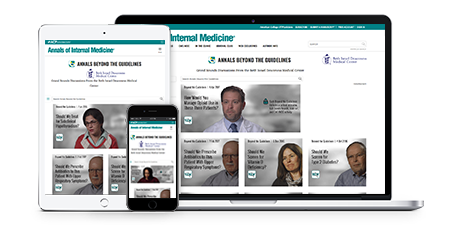Annals Beyond the Guidelines
Despite advances in treatment, HIV infection remains an important cause of morbidity and mortality, with more than 30 000 new cases diagnosed in the United States each year. There are several interventions traditionally used to prevent HIV transmission, but these vary in effectiveness and there are challenges to their implementation. In 2014, the Centers for Disease Control and Prevention published initial guidance on the use of antiretroviral pre-exposure prophylaxis (PrEP) to prevent transmission of HIV infection in persons at risk based on multiple studies that showed it to be highly efficacious in various populations. It was updated in 2021 to reflect new drug options. The U.S. Preventive Services Task Force also recently updated its recommendations for PrEP, which strongly support its use in persons at risk. Despite its well-established effectiveness, the implementation of PrEP in clinical practice has been variable, especially among populations underserved by the medical system and marginalized by society. Fewer than one third of persons in the United States who are eligible for PrEP currently receive it. Here, 2 physicians experienced in HIV PrEP debate how best to identify patients who might benefit from PrEP, how to decide what regimen to use, and how to monitor therapy.
CME/MOC:
Up to 5
AMA PRA Category 1 Credits ™ and MOC Points
Expires April 09, 2027
active
Cost:
Free to Members
Format:
Video Recordings
Product:
Annals Beyond the Guidelines
From Annals of Internal Medicine (annals.org), Beyond the Guidelines is an educational feature based on recent guidelines. Each considers a patient (or patients) who "falls between the cracks" of available evidence and for whom the optimal clinical course in unclear. Presented at Beth Israel Deaconess Medical Center (BIDMC) Grand Rounds, each conference reviews the background evidence and experts then discuss the patient(s) and field audience questions. Videos of the interviews and conference, the slide presentation, and a CME/MOC activity accompany each module.



